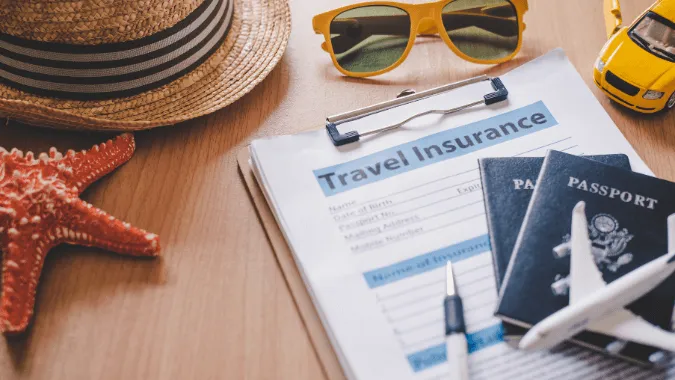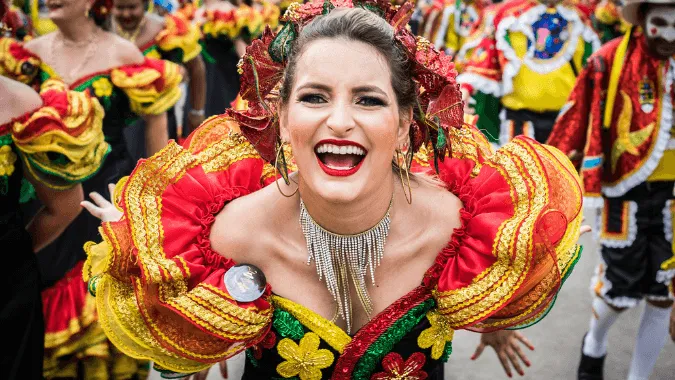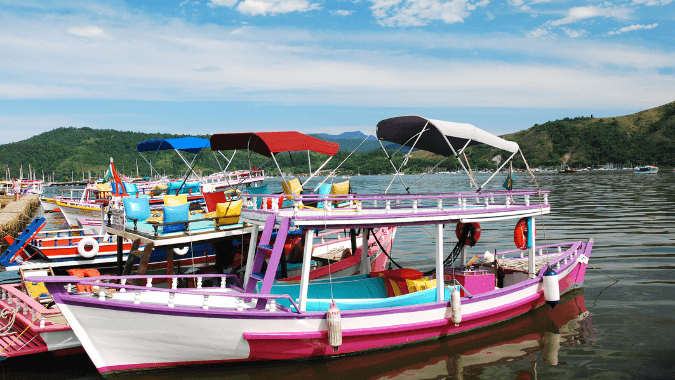Insider Tips
This is what you can expect on your visit to the historic center of Salvador de Bahia
Tags:
To know the history of Salvador de Bahia is to know a great part of the history of Brazil and its culture. Because this is where the incredible history of this continental country begins, as it was its first capital. So if you are thinking of visiting this colorful land, between the sun and the sea, it is mainly in its historical center where you will discover the richness of all its diversity, being the true Bahian heart, bursting with rhythms, flavors, secrets and pride. This is what you can expect when you visit the historic center of Salvador da Bahia. You will surely be encouraged to discover this exotic destination so get ready for its incredible energy. ![]()
![]()
![]()
![]()

Salvador de Bahia was the first capital of Brazil between 1549 and 1763, which explains its rich history and culture, a true symbol of the Afro-Brazilian community / Photo: silverjohn
Charming architecture
Salvador da Bahia is a rainbow of colors that decorate its colonial baroque houses along the cobblestone streets of its historic center, represented by the Peroulihno and the charming neighborhood of Santo Antônio Alem do Carmo. A UNESCO World Heritage Site, it has preserved many exceptional examples of Renaissance architecture. Between geometry and symmetry, it is a true artistic spectacle that presents itself before our eyes through the facades, ornaments and symbolic details that contribute to the essence of this place full of history. Even after its relatively glorious past during the colonial era, Salvador has remained a city of great importance for modern architecture. The city has developed more towards the southern end, maintaining the essence of the Ciudad Alta. However, the historic center is still home today to two of its main tourist attractions, such as the Lacerda elevator, built in the 19th century and renovated in the early 1980s, which serves as a connection point between the Upper City and the Lower City. As well as the Praça da Cruz Caída, a monument erected in memory of and in resistance to the demolition of the Sé church for a tramway station project in 1933. Did you know? Salvador was built following the model of a medieval city, so its center is located on an elevated ground with entrance gates, which gave name to several of its streets.
The Plaza de la Cruz Caída is a special place where the Sé church used to stand, before it was demolished. The monument erected there represents a large collapsed cross, as a symbol of the loss that marked the Bahian people / Photo: Tiffany Flour.
A heavy history
Like many colonial cities, its majestic architecture was built by the hands of the many slaves brought to Brazil. Salvador da Bahia played a major role in the country's infamous slave trade, so it's a mixed feeling to contemplate its architectural and historical beauties. Having been the main port as well as the capital of Brazil for nearly two centuries, between 1549 and 1763, the historic center is adorned with buildings that are governmental, imperial and religious relics, some of which are now museums such as the Rio Branco Palace and the Misericordia Museum, among others. On the way to the historic center of Salvador da Bahia, there is one thing that strikes above all else: the large presence of religious buildings that punctuate your visit. The Terreiro de Jesus square already houses three of them, the churches of São Domingos Gusmão and São Pedro dos Clérigos, as well as the Basilica of São Salvador. Further on, you will find the church of Santíssimo Sacramento do Passo, the church and convent of nossa senhora do carmo, as well as the emblematic Nossa Senhora do Rosário dos Negros and not forgetting the great and noble church of São Francisco de Asís. Indeed, in Salvador you do not know what to expect. Travel tip: the city tour in Salvador de Bahia allows you to visit all the main attractions of the historic center in a rhythmic and guided walk, to get to know these relics of the past and, in particular, to visit the church of St. Francis of Assisi and the Cathedral Basilica of San Salvador.Wild rhythms
You can't escape it. As you stroll through the historic center of Salvador da Bahia, your steps will be punctuated by the notes and vibrations of its musicians, who proliferate the richness of African heritage in every corner. You will get to know the Rodas de Capoeira, a traditional Brazilian artistic expression, which mixes dance, martial arts, singing and music, in the different squares, being the favorite meeting places of the locals and the most symbolic for the capoeiristas. Drum groups also fill the streets of Salvador, inviting you to stop and enjoy their incredible energy. Did you know? You will surely notice the large presence in souvenir stores of a symbol of Peace and Love in red, yellow and green. It is the symbol of Olodum, a Brazilian cultural group of the black community of Salvador, which fights against racism and supports the Afro-Brazilian community.
Rhythm, martial arts and chants are at the heart of Capoeira/ Photo: filipefrazao
Delicious and rich gastronomy
You can't miss this during your stay in Salvador da Bahia, Bahian gastronomy! The center is full of excellent restaurants, many of which offer a magnificent view of the Bay of All Saints. Let yourself be surprised by the taste of dendê palm oil, the exotic flavors of acarajé, vatapa, moqueca and the delicious sweetness of tapioca and coconut sorbets, passion fruit mousse and the famous lemon and coconut juice - a real treat for you!A strong traditional and cultural presence
When visiting Salvador da Bahia, there are a multitude of discoveries to be made, so it is recommended that you bring a guide to help you understand all this diversity. By learning about the richness of each of the cultural details that make up Bahian culture, you will enjoy your experience more and also gauge the importance of this iconic place in Brazilian history and culture. For some details, you will also meet Bahian women dressed in their traditional costumes, participating in the cultural dynamism of the historic center, and you will not fail to observe the colorful Bonfim ribbons that cover the balconies, benches and other structures of the city. Popular among locals and a must-have souvenir for tourists, the ribbon is synonymous with faith and tradition, as it has the power to grant three wishes, according to popular belief. Travel tip: If you stay several days in Salvador da Bahia, don't hesitate to explore the surrounding area. Daytours4u takes you to the beautiful islands of Frailes and Itaparica, to discover the richness of Salvador's nature.
If you are looking for absolute tranquility, the itaparica island will be your great ally / photo: Sloot
So, are you ready to live this colorful and emotional experience? And that's just a sample. The capital of Bahia has not finished surprising you and you will probably fall under its spell. Between its frenetic rhythms, exotic flavors, architectural beauty and striking history, Salvador da Bahia offers you a true traditional and cultural experience of Brazil. When is your next travel date?By: Tiffany, passionate communicator, inveterate marketer, enthusiastic traveler and Daytours4u contributor.
Tags:
Search
-
Exciting 4x4 route: São Luís and FortalezafromUS$1,014
-
Vila Gale Mares Resort All InclusivefromUS$100
-
Ecotourism in Chapada DiamantinafromUS$672
-
All inclusive Vila Gelé Cumbuco ResortfromUS$999
-
Full Day Cafayate Tour from SaltafromUS$68
-
Transfer Aeroparque - Buenos AiresfromUS$46
-
-
Transfer Ezeiza - AeroparquefromUS$91
-
-
Excursion to El Chaltén from El CalafatefromUS$153
-
-
-
-
-
-
-
-
-
-
-
Daytours4u © 2012-2019. Use of this website constitutes acceptance of the Terms & Conditions.
Open Chat
Hello, How May I Help You?



